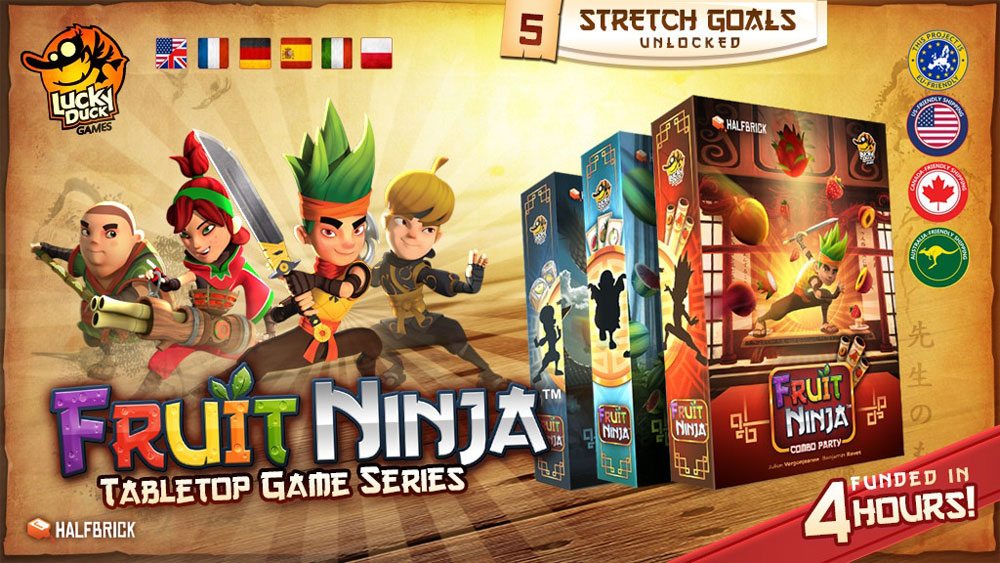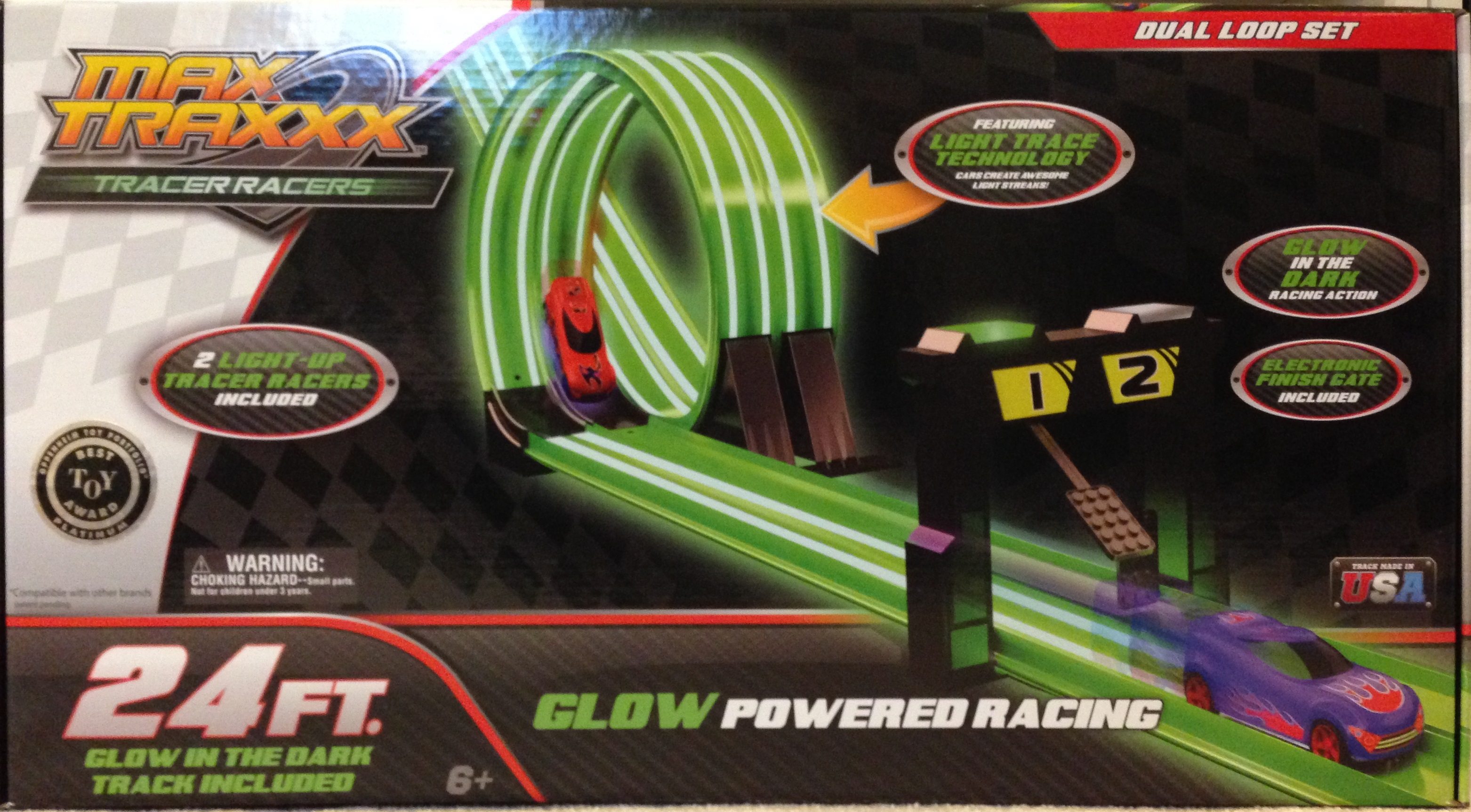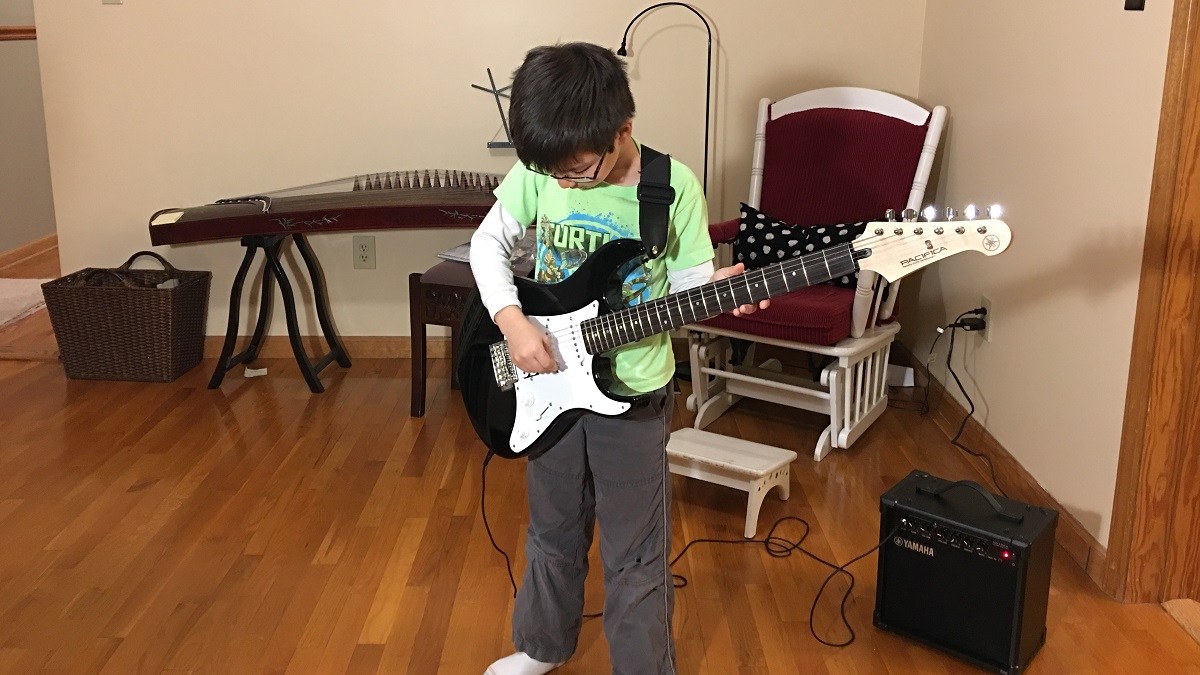You know the drill: slash the fruit as it pops up in the air, and avoid the bombs. Except now instead of swiping with your finger or swinging a controller or your arms, you can play Fruit Ninja on your game table.
What Is Fruit Ninja?
In case you’ve never heard of Fruit Ninja, it’s a videogame first introduced in 2010 for the iPhone by Halfbrick, and has since spawned a number of different versions and moved to other gaming platforms. In it, various fruits (and bombs) appear, usually tossed up from the bottom of the screen, and you slice them before they fall back down. Hit a bomb or drop too many fruits, and it’s game over for you.
Now, Fruit Ninja is also a collection of 3 tabletop games created by Lucky Duck Games: Card Master, Slice & Dice, and Combo Party. The games are currently funding on Kickstarter, with various pledge tiers for one ($29), two ($54), or all three titles ($69). Each of the titles is for 2 to 4 players, ages 10 and up, and takes about 30 minutes to play.
I was able to get a prototype of one of the titles to try out. Fruit Ninja: Card Master is a speed-based card game with some light deck-building elements; the rest of this post will be a full review of Card Master.
New to Kickstarter? Check out our crowdfunding primer, and visit our Kickstarter curated page for more projects we love.

Fruit Ninja: Card Master Components
Note: My review is based on a prototype, so components are subject to change and may not reflect final component quality.
- 4 Player Boards
- Central Board
- 60 Starting Cards (4 sets of 15 cards)
- 60 Sleeves (4 sets of 15 sleeves in player colors)
- 60 Upgrade Cards (6 sets in 10 categories)
- Dojo Cards
- 40 Golden Apple Tokens
- 40 Starfruit Tokens
- 20 Bomb Tokens
- 20 Anti-Bomb Tokens
The player boards each show a different character and are color-coded. My daughters complained that there’s only one girl and two boys; the characters look like they belong in a CGI animated show. Each board has two areas for cards, and some small circles for your starfruit and apple tokens.
The central board has one slot for used cards, and two areas for the bomb and anti-bomb tokens. The spaces are fairly small, though, and the tokens tend to just spill over. I would say the boards may not be entirely necessary, but they do help to organize the play area a little.
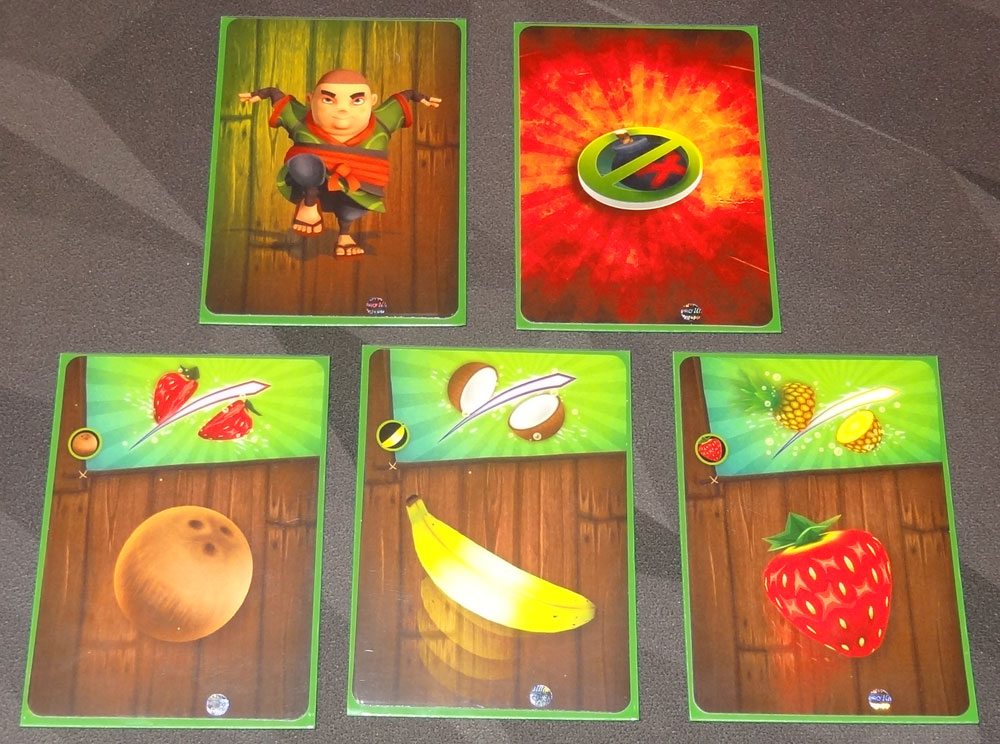
The starting cards are color coded on the backs, with a portrait of the characters, but you’ll be sleeving them anyway–that helps you distinguish each player’s cards once you start buying upgrades, which all share a common back. (A stretch goal changed the sleeves to custom sleeves, showing the characters on the backs.)
The graphics on the cards matches what you’d see in the videogame–various fruits against a wooden backdrop, and sliced fruit with a big slash mark through it.
The game also requires the free timer app, or you can use any 40-second timer.
How to Play Fruit Ninja: Card Master
The Goal
The goal of Fruit Ninja: Card Master is to score the most points (represented by golden apples) in four rounds of play.
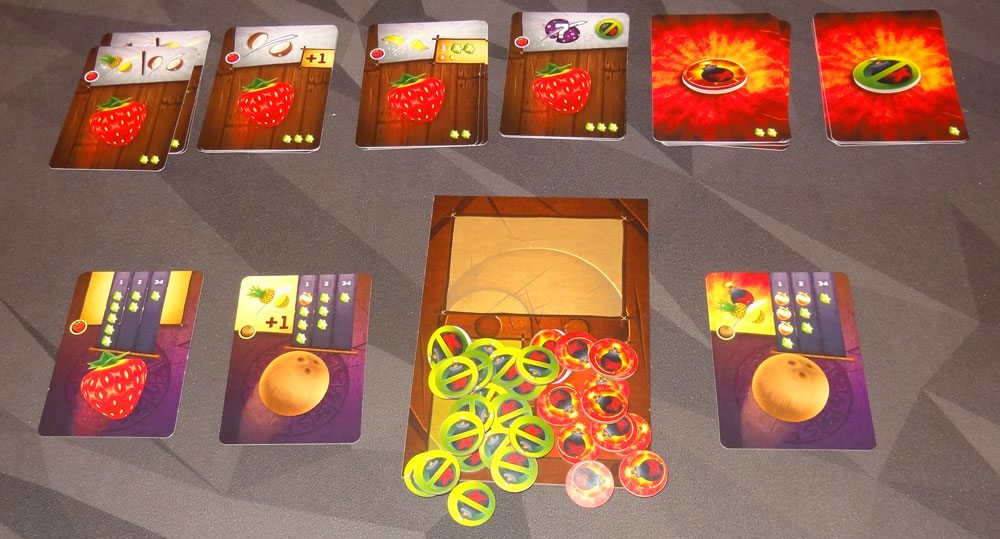
Setup
To set up the game, give each player a set of starting cards and a player board. (The first time you play, you’ll need to sleeve all of the starting cards.)
Place the central board somewhere near the center, with the bomb and anti-bomb tokens on it. Shuffle the dojo cards and make a deck based on the number of players. You also sort out the upgrade cards into their categories and choose 6 types to use, placing those in a market area; the rulebook has a few recommended upgrade sets. You also place the golden apple upgrade card in the market, with the golden apple tokens nearby. The starfruit tokens are also placed in a supply.
Gameplay
The game lasts 4 rounds, and each round has a Dojo Phase and a Buying Phase.
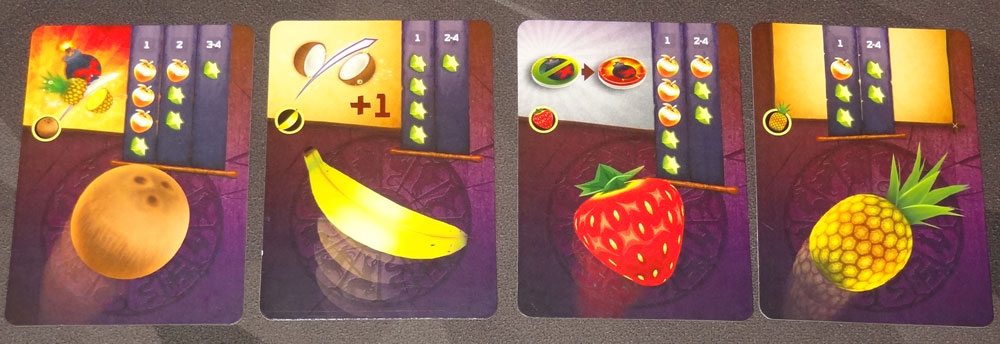
award extra points for particular fruit, or even make anti-bombs into bombs. (Prototype shown) Photo: Jonathan H. Liu
Dojo Phase
First, reveal dojo cards equal to the number of players plus one. These should be placed in a row, within reach of all the players, but also with room below them to play cards.
Each player shuffles their own deck. When the timer starts, the entire deck is placed face-up on the left space of your player board, and then play begins. Play is simultaneous, without taking turns.

skewed so you can see the cards better.
(Prototype shown) Photo: Jonathan H. Liu
Playing Cards
You may move cards between the two spaces of your board one at a time, and you are allowed to play either of the two cards showing. Each of the dojo cards and the player cards shows a particular fruit at the bottom. Your player cards also include a slashed fruit on the top of the card. To slash a fruit, you must play a slashed fruit on top of a whole fruit that matches it, splaying the cards so they overlap.
There are various action cards with red backgrounds that do not slash fruit. To use these, discard them to the central board and then take the action. At the beginning of the game, you have one anti-bomb action card, which lets you take an anti-bomb token and place it on any card. I’ll get to more details about the actions a little later.

After the timer rings, any player may stop playing cards and tap the app, which starts a final 5-second countdown. (If you don’t have the app, a player who stops just counts down from 5 aloud.) When that countdown ends, all players must stop playing cards.
Scoring Dojos
At the end of the round, you score each dojo separately. Some of the dojos have special effects–certain fruits may count as bombs, or have a +1. effect. There are also dojos in which anti-bombs count as bombs.
If you slashed a fruit that counts as a bomb, then that card and the rest of your chain of cards after that will blow up and be removed before scoring. (The bomb is interrupted by another player’s card.) If you play an antibomb on a bomb, it cancels out.
If you slashed a fruit that has a +1, then that card counts extra.
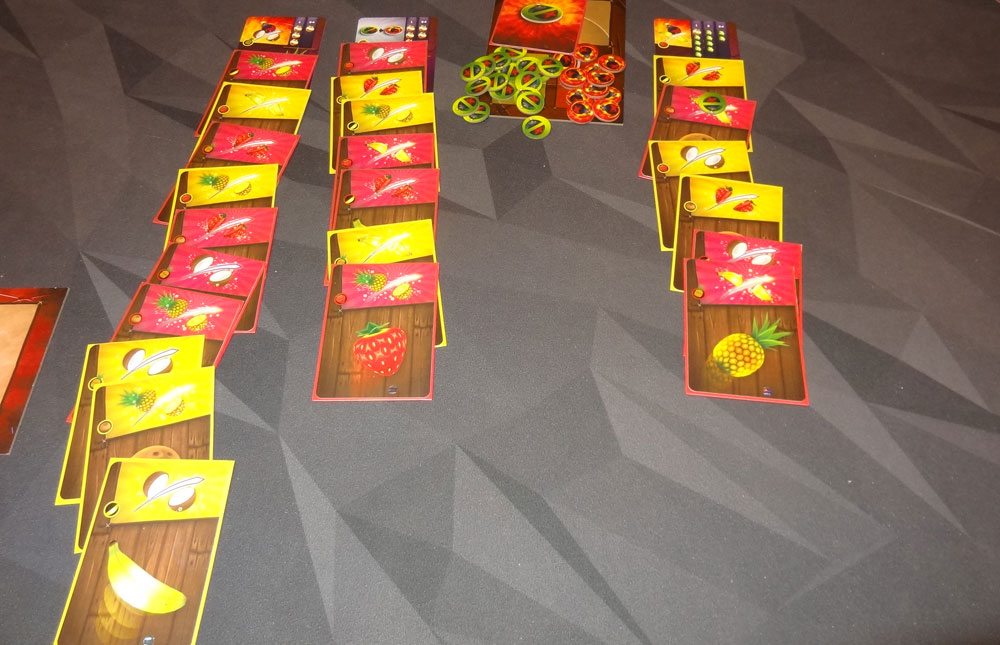
Check each dojo to see who has the most cards in the dojo, and then give rewards shown on the top of the dojo card according to what place each player got. In case of a tie, tied players share the highest reward they tied for, but then you skip the other places for the next player. You must have at least one card in a dojo to get a reward. Rewards are in the form of golden apple tokens and starfruit tokens.
Dojo cards are discarded after scoring.
Buying Phase
After all the dojos are scored, all tokens are returned to the supply and everyone collects all of their played cards (including action cards). Then, starting with the player who ended the round and going clockwise, everyone has a chance to buy upgrades.
Upgrade cards are paid for with starfruit tokens, with the price shown at the bottom of the card. When you buy an upgrade, you put it into one of your sleeves, replacing the existing card (which is out of the game). Your starting deck includes two cards (with your character on them) that don’t do anything, so you should upgrade those first, but then you’ll have to decide what cards to replace.

There a number of upgrade types–some are fruit-slashing cards, and some are action cards. There are cards that can slash two different types of fruit, some that give you a +1 when used, and some that award extra starfruit if you place first or second in a dojo. There are also some cards that can slash any fruit–one also has its own anti-bomb on it, and the other is a combo bonus, worth the number of the entire chain that it’s part of.

The action cards include more anti-bombs and double anti-bombs. There are also bomb cards that let you place a bomb on any card, and a card that lets you move any token to another card. Finally, there’s a card that lets you remove any two uncovered cards in any dojos and discard them to the central board.
The golden apple card itself isn’t purchased–it’s just there to remind you that you can buy a golden apple for 6 starfruits.
Game End
The game ends after four rounds, at which point there won’t be any dojo cards left to refill the row. Players count up their golden apples; whoever has the most wins!
Why You Should Play Fruit Ninja: Card Master
There are many video games that have become board games and vice versa; I remember having a Pac-Man board game when I was a kid, with plastic Pac-Men that gobbled up marbles on the board. So adapting a popular video game to the tabletop isn’t a new idea, and Fruit Ninja is certainly a very popular title. What’s interesting is that there actually have been Fruit Ninja tabletop games already–a card game in which you cut the deck to find out what fruit you sliced, and another that had physical “fruits” that you sliced apart with a plastic sword.
So, how well did they do this time around?
You’d think that Fruit Ninja would be a dexterity game, though I think that would have had limited appeal–something that would be relegated to the kids’ games shelf. While there is some aspect of dexterity simply because it’s a speed-based game, there’s also a bit of light deck-building, and you have to pay attention to card combos and effects while playing your cards quickly.
Each lightning-paced round forces you to make a lot of decisions, all while flipping through your deck to find the right cards. Which dojos do you want to compete for? Some reward you with golden apples, and others offer more starfruit. Do you pile heavily onto one dojo to ensure victory there, or spread out and hope that second and third place in several dojos is better than first place in one?
Likewise, when you’re playing cards, you have to watch for things like which fruits trigger bombs so that you can ready your anti-bombs. Don’t let an entire valuable chain get destroyed because you forgot that pineapples are bombs in that particular dojo! On the other hand, if you search for your anti-bomb right after slicing a bomb fruit, another player may keep slicing away at that dojo, which means that your anti-bomb only salvages a single card rather than a chain.
The buying phase isn’t timed, so you can take a breather and think about what you want to purchase, but even then there’s some interesting choices to make. Action cards can be very powerful–more anti-bombs to protect your cards, effects that discard other cards to roll back somebody’s chain, or even bomb cards, that can be really devastating if you wipe out an entire player’s chain when they’re not paying attention or don’t have enough anti-bombs to cancel it. But the slicing cards are also helpful: +1 cards to make your slicing more valuable, extra starfruit to build up your buying power, wild slices that let you cut any fruit so you don’t have to search your deck as much.
Buying too many action cards means you have fewer cards for slicing, and vice versa. Your deck is always 15 cards, so each card you buy must replace an existing one. The first two are easy–you just swap out those useless character cards in your deck–but after that it gets a little trickier. Do you replace the slicing card that has similar fruit on top and bottom? Or do you change the balance of your deck, so that you can string together big chains of bananas and coconuts? If you specialize too much, you may find yourself totally unable to slice anything, but it could also let you shut out an opponent.
When I reviewed the original Fruit Ninja back in 2010, I called it “very silly but oddly satisfying,” and I think that description still holds up many years later. It is oddly satisfying to watch those fruits fly apart with a swipe of your finger. Fruit Ninja: Card Master may not have the simplicity of the video game in terms of swiping to slash, but it does manage to pack a surprising depth in a quick-playing game.
That said, Fruit Ninja: Card Master is still what I’d call a casual game. You do get to make a lot of fun choices and slap cards down on the table in a slicing frenzy, but it’s not going to have the strategic possibilities of a 2-hour game, and that’s fine. I think it’s a nice mix of speed and strategy that does a good job of putting you in the Fruit Ninja world while putting its own analog spin on it.
The three titles included in this Kickstarter campaign were chosen from over 20 prototypes, and each has its own take, combining a bit of strategy with the speed and time-based action you’d expect from a Fruit Ninja game. I haven’t gotten to play the other two myself, so you’ll have to check out the Kickstarter page for more details. Slice & Dice is a dice-based game, where players roll dice simultaneously and then grab combo cards. Combo Party has everyone flipping cards from their decks, and then trying to grab the Tsuka Stick in the center of the table if any cards match.
If you’re a fan of Fruit Ninja, I think Card Master is a fun tabletop adaptation that you may enjoy. All three titles look like fun for gamers who like speed-based games, but not necessarily for those who like taking their time to make decisions. I do have to admit that the $70 price tag for the collection seems like a lot, even though it is three separate games. But clearly there are a lot of backers who think otherwise, because the 3-game tier is by far the most popular.
For more information about any of the three titles, visit the Fruit Ninja Kickstarter page!
Click here to see all our tabletop game reviews.
If you’d like to stay up-to-date with all of our tabletop gaming coverage, please copy this link and add it to your RSS reader.
Disclosure: GeekDad received a copy of this game for review purposes.
